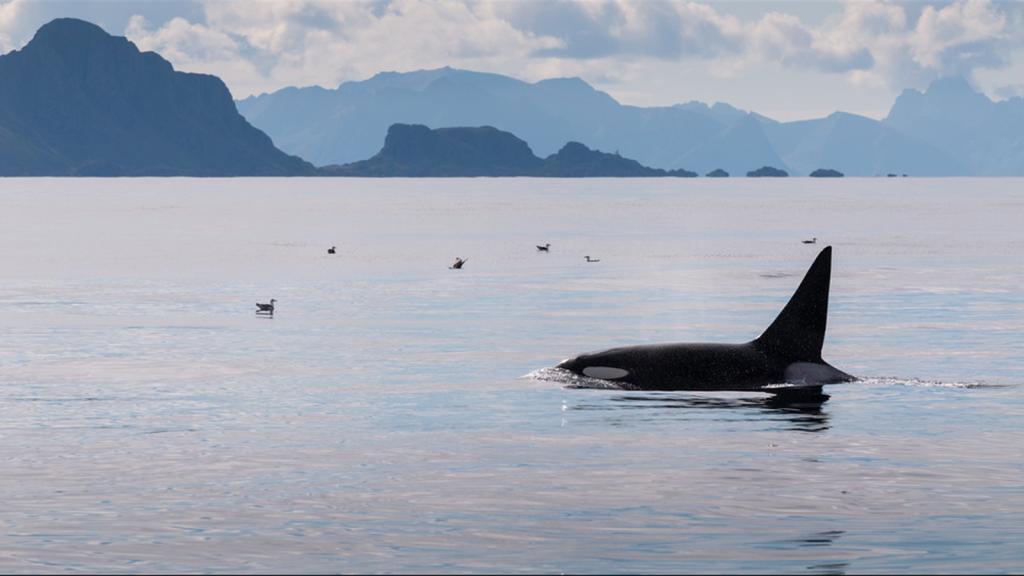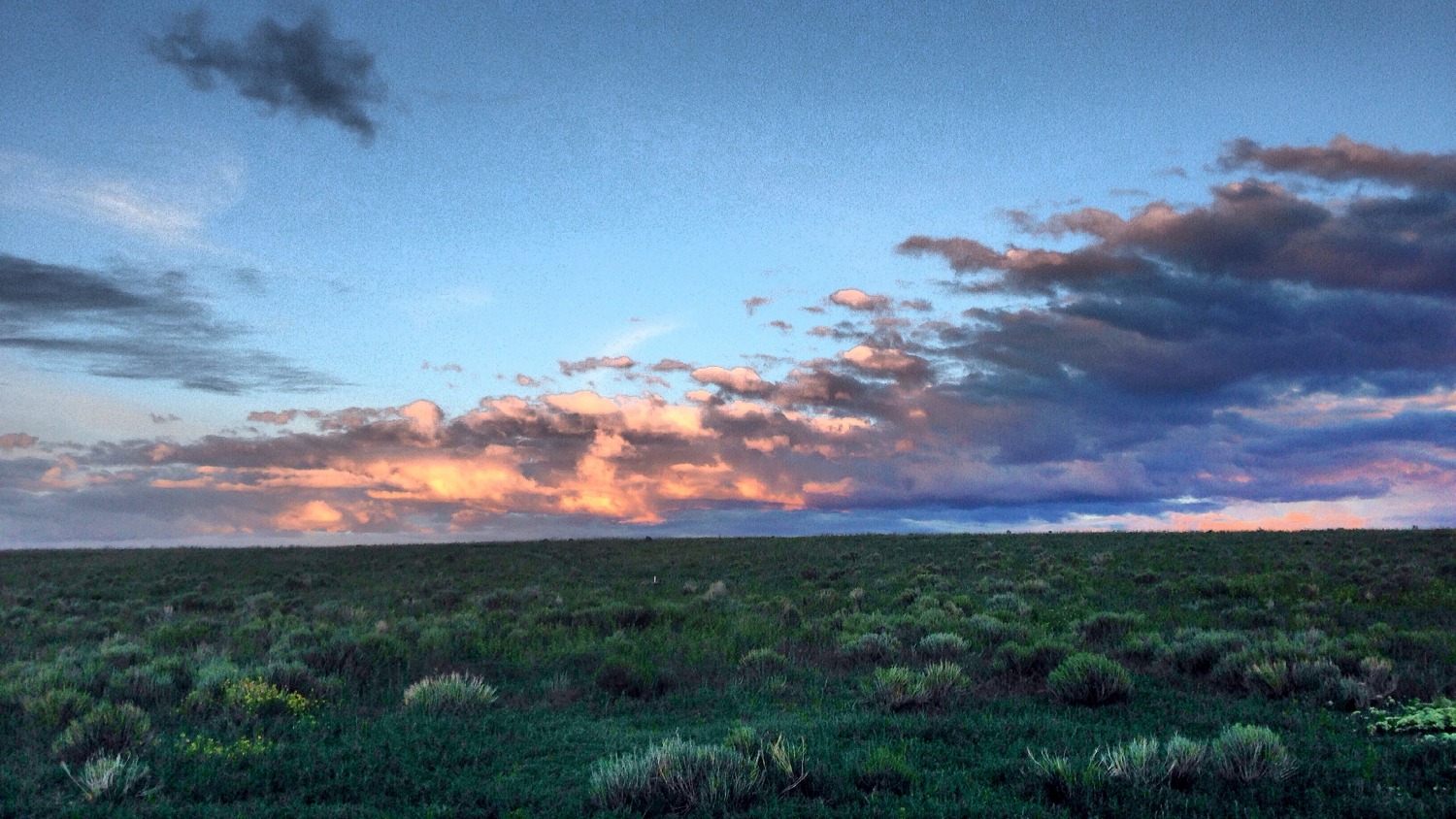This article is a followup to a piece on why mid-size farmers and foodies to get along.
I was waiting in the security line at the Helena airport on my way back to Seattle when I noticed the TSA agent squinting at the x-ray machine screen. A smile slowly crept across her face and she motioned over another agent. She pointed at the screen and the pair erupted into giggles. “Mind if we take a look inside your bag, ma’am?” she said as my backpack emerged from the machine. She pulled out the bundle of plastic and butcher’s paper and asked, “Is this what I think it is?” I responded with a sheepish grin: “I’ll split it with ya, if you let me keep it.” Polite smile. “It’s all yours,” she replied, sliding the frozen T-bone steak back to me.
My family loves beef — especially our own. I can taste sweet notes of alfalfa that we spend all summer watering, growing, and cutting; the meadow grasses we pasture our cattle on provide their own subtle herbaceous flavors. Our pride goes beyond flavor. My father, along with our whip-smart ranch manager and his hard-working daughter, work seven days a week on the Lazy T Ranch to raise 450 head of cattle. Their dedication is best enjoyed medium rare, and I love it most after a day of throwing words out into the void that is the internet.
So yes: Whenever I go home, I’ll pull a Jon Tester and haul our meat through airport security and in coolers in Subarus over mountain passes. As I make that geographical transition, from the quiet hum of our ranch to my bustling Capitol Hill neighborhood, I most acutely feel the pinch of being caught between my heritage and city life. This leads me to daydreaming in country songs and wondering whether we can connect these two worlds — for myself, the food movement, and the country at large. Are my loves of our family ranch and that of my profession mutually exclusive? And, more importantly, is there a way to bridge the gap between foodies and mid-size farmers before the latter disappear? I decided to ask my ranching father.
If the meat bag hadn’t already made this abundantly clear, when it comes to beef, I’m writing from a place of total bias. I’ve heard the same facts that you have. If you want to fight climate change, one of the best things you can do is eat less meat. The meat industry pollutes egregiously and quite often treats livestock in mind-bendingly cruel ways. Methane from cow farts is a major greenhouse gas, and coming from a former shit-shoveler, that’s not the way any planet should go out. I have mad respect for vegetarians, especially considering I tried to be one for a year and couldn’t hack it.

Terry Minow
As for the bias toward my interviewee? Well, he’s he’s my dad — and he’s an immensely likable, funny fellow who befriends strangers at the drop of a cowboy hat. He ranches on a 3,000-acre slice of land in Western Montana’s Boulder Valley. My family came to the valley in the 1800s, but my grandparents bought this ranch in 1938. Here’s how our operation works: The cows calve in the late winter. We put the cows and calves out to pasture on Forest Service land in the summer while we grow and harvest hay. In the fall, after the calves sell on a video auction, they ship out to the middle of the country to be fattened in feedlots and slaughtered. Our ranch is typical of operations in the valley: family-owned, mid-sized. There’s rarely a season where our neighbors aren’t pitching in on our ranch and vice versa. The sense of community is deep. In fact, many of the ranchers have great-grandparents that worked next to my great-grandparents to build the little white Catholic church in the valley.
I talked to my dad for an hour (video clips here), and in that time, I realized things I never learned on the ranch. Since my dad and I always end up rambling about barncats, family, and little ranch details you don’t need to know, I’ve condensed the interview into five big takeaways.
1. Our definitions of sustainability are different. When I use the term ‘sustainability,’ I’m thinking of various ways of being a bit more gentle on the land: going organic, minimizing fossil fuels and pollution, maintaining soil health. My dad’s definition centers on sustaining the ranch. To him, all of my ideas on sustainability may ultimately benefit the ranch, but he’s more concerned about making sure we don’t lose the place. Good, long-term practices are critical to that, but it won’t matter that we never used pesticides if we go belly up and a shiny new subdivision takes our place.
2. Farming and ranching are very different beasts. “Hold up,” you say, mid-burger bite. “You’re here to tell me that this patty and bun took completely different paths to end up hovering near my mouth??” Yes, I am. Also, you have a little mustard on your chin.
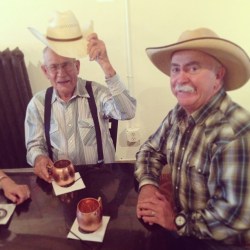
Brady Minow SmithGrandfather and father. Similar hats; very different jobs.
Those familiar with Montana know the gulf between the green mountains and the endless prairie; those familiar with ag know the difference between the cultivation of grain and the raising of meat. Even though I grew up in agriculture, I was surprised to realize how its different policies and technologies shaped my life. For example, my father didn’t follow the farm bill closely; there just wasn’t much in there for ranchers like him. But whether or not my grandfather agreed with ag policy and crop insurance, they affected how he farmed.
There’s a common, though not uncontested, sentiment in the food movement that we should look to our grandparents or great-grandparents on how to raise food. But for contrast, let me offer my own anecdote on what it meant to modernize wheat farming: My grandfather had to drop out in 10th grade to help out on his family’s farm; later, he was able to send my mother to college.
My grandparents were able to pay my mother’s tuition after a year of good wheat prices (it boggles my mind that I might not be here today if the market had been lower). Luck and hard work played their roles, but technology ultimately freed my mother and her two siblings to leave the farm. My grandfather, with help from neighbors and my grandmother, was able to farm that same stretch of land for over 60 years until retiring at age 86.
While this means I can’t decry all the trappings and tools of modern ag, somewhere along the way, it went too far. As a farmer in documentary Dryland notes, you can buy a loaf of bread for the same market price for a bushel of wheat. How many loaves of bread can you get from a bushel? Estimates vary from 60 to 73, but regardless, the prices are insultingly low. My grandpa had to work that soil hard. Failure was always a prospect and it was difficult to see too far beyond that crop or the next. And, as the would-be next generation of farmers are too often discovering, the land usually can’t support more than a few people.
In contrast, I could go back to the ranch at any point. In fact, my parents regularly suggest it, only half jokingly. Our little slice of the ag world is looking pretty rosy. Cattle prices are breaking records (never mind that it’s partially because of falling grain prices). And as my father puts it, it’s not just old farts working the land. A good majority of the kids I grew up with went off to college and returned to ranch. There are several young female ranchers; this winter, my childhood best friend sent me photos of a calf warming up in front of her wood stove.
While both professions put food on our plates, they’ve diverged in ways I need to recognize. And although we might care deeply about the food system, my father and I don’t have all of the solutions. There’s only so much we can do to green our operation before policy and infrastructure changes are required, especially for our friends and family on the other side of the state. We need a food system that allows farmkids to leave the land; we need a food system that lets them stay.
3. He’s both more hopeful and less idealistic about what the food movement can do. My father thinks slow food has accomplished a lot and has the power to shake up the way we ranch and farm. He points out conservation programs and helpful tools from the government. For example, we received a grant for a center-pivot irrigation line that uses a gravity pump to increase crop yields while saving water and energy (it knocks a $3,000 to $4,000 energy bill down to less than $100). While federal policy is geared toward the big players, he says that corporations and communism all fail for the same reason: It’s a big, one-size-fits-all prescription for a complicated world. He thinks consumer sentiment will eventually win out.
It became clear to me, though, that he’s picturing smaller nudges rather than a systematic overhaul. He thinks eaters can and will change the way we’re corn-feeding beef in feedlots, but he doesn’t think Montana is going to transition to a locavore’s paradise. “We have more cows than people,” he points out — we have to ship them somewhere eventually.
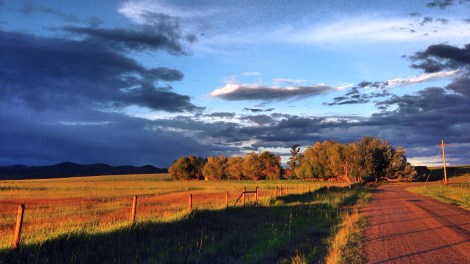
Brady Minow Smith
4. While our ranch can do better, it still meets both of our definitions of sustainable. Our ranch is beautiful. Cows graze alongside herds of antelopes in wide fields. Death feels closer, yet more natural and clean. Black bears prowl the shade by the river. Coyotes yelp in the night and pick the bones of calves that couldn’t beat the winter. I see sandhill cranes and foxes and the occasional trundling badger. There’s space for a wide range of animals as well as experiments in greener practices, like using the center-pivot wheel line and giving up hormones, steroids, and antibiotics (save for the occasional visibly sick animal). As a result, the place is biodiverse and the soil is rich, so to me, we must be doing something right.
But yes, we can do better. While we have the pivot for irrigating, we also have wheel lines which are far less efficient. We use diesel-powered tractors. We concentrate on one product, beef, instead of diversifying. Even though cows move through our lush meadows for much of their lives, they are still loaded up in cramped trucks, shipped across the country, and packed into feedlots until slaughter.
5. He trusts me. In my last story, I shared a memorable experience of shoveling shit and the wisdom that came with it. But here’s the truth: I was at my most competent behind that shovel, my friends. I’ve broken hay wagon axles. My horseback-riding style could be described as slow, at best — at worst, I’m daydreaming between another rider and a runaway calf. Once when I was irrigating, the wind blew a quarter-mile-long wheel line down the hill. While it was made of lightweight aluminum, the speed, size, and fact that it was full of water means it could have squashed me like a bug. Still, I chased after it, throwing down fence posts to stop it, but it just jumped four feet in the air over them. I finally caught it with a successful post near the bottom of the hill and stood triumphant. When my father saw what I had done, he pointed out that I could have easily been killed and should have just let the damn thing go. I suspect the entire valley breathed a sigh of relief when I drove away to a job where the biggest occupational risk is carpal tunnel syndrome.
All of this means I was surprised when he asked me for advice on whether to till or spray pesticides on a field with a weed problem. I told him that I thought it was better for the ecosystem to leave the field intact and carefully spray pesticides on problem areas. In response, the ranch bought a no-till plow.
He told me that I’ll be making the decisions for the land someday and that he was glad that I was at Grist learning about better ways to do things. It felt good to know that even though I’m not on the ground with my childhood friends learning the ins and outs of our land, he still thinks I’m doing something valuable. Wherever this road take me, I can be a part of the solution. And I have to believe that if next-gen farmers and conscientious eaters keep this up, we’ll have a stronger, more sustainable food system to show for it.
————
After hearing from a wonderful, diverse group of folks on my last piece — let’s do it again! Leave a comment, reach out on Twitter, or drop me an email about your take on the food movement and mid-size farms. I’ll include the best responses in my next post. And keep it clean — unless, of course, you’ve got a horse-turd-tear-worthy manure story of your own.
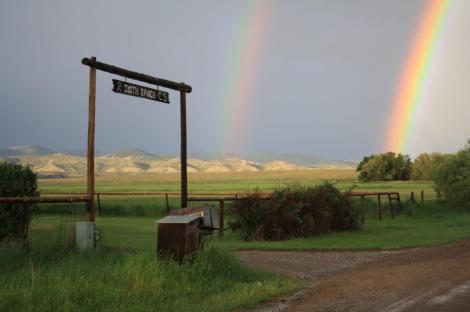
Sandra Männel
